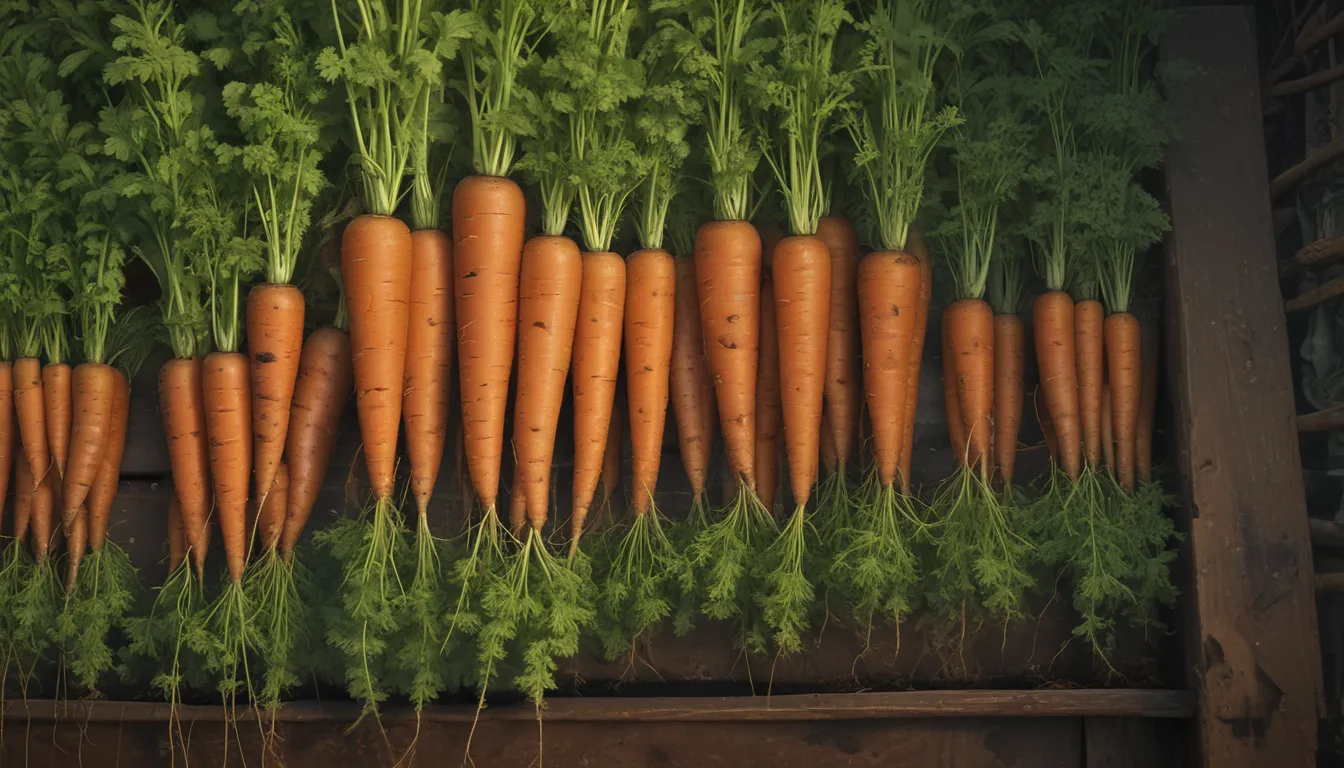The Complete Guide to Growing Carrots in Containers

Are you looking to grow your own fresh root vegetables, even without a large garden space? Container gardening might be the perfect solution for you. It offers a convenient way to produce delicious carrots in your own home, with the added benefit of being able to avoid any wild critter issues.
One large round planter has the potential to yield up to 30-40 carrots per harvest, making it a rewarding endeavor. With the proper care and attention, you can easily harvest two or more crops per season, making it a sustainable and enjoyable activity.
In this article, we’ll delve into the details of how to successfully grow carrots in containers, covering everything from getting started to harvesting and everything in between.
Getting Started
The first step in container gardening is to select a suitable container. Any shape will work, as long as it is deep enough to accommodate your chosen cultivar. It’s recommended to opt for a variety that develops a short, more rounded root rather than a long, thin one. The container should be at least 12 inches deep to allow ample space for root development.
Ensure that your chosen container has proper drainage, either through pre-existing holes or by drilling a few holes in the bottom. Fill the container with organically rich potting soil that is smooth, light, and airy, enabling optimal root growth.
Once you’ve filled the container, place it in a sunny location that is suitable for the specific variety of carrots you’re growing. Keep in mind that bigger containers generally yield a larger crop, so opt for larger containers if you’re looking for a bumper harvest.
Container Grown Carrot Care
Maintaining proper care for your container-grown carrots is essential for a successful harvest. Regular watering at soil level, avoiding water on the leafy tops to prevent rot, and ensuring the soil remains moist but not soggy are crucial steps in care. Additionally, using well-draining, loose soil with a high potassium content will promote healthy root growth.
It’s best to avoid nitrogen-rich soil, as this can promote excessive foliage growth at the expense of root development. Consider using a dedicated vegetable potting mix or conducting a soil test before planting. Regular feeding with a low-nitrogen vegetable fertilizer or compost tea can provide essential nutrients for your growing carrots.
How to Grow
Carrot seedlings do not transplant well, so it’s best to start with seeds directly in the container. Sow the seeds outdoors 2-3 weeks before the last expected frost date for your area. Alternatively, start seeds indoors in biodegradable pots a few weeks ahead of time to jump-start the process.
As the seedlings grow, thin them out to maintain adequate spacing between plants. Water the plants regularly, especially in hot weather, and keep an eye out for any potential issues such as pests or diseases. If the tops of the carrots start to grow above the soil line, cover them to prevent bitterness and sun exposure.
Growing Tips
- Use well-draining, loose soil to avoid misshapen roots.
- Water frequently, particularly in hot weather.
- Fertilize regularly to replenish nutrients lost in containers.
- Consider growing carrots indoors if outdoor space is limited.
Carrot Cultivars to Select
When selecting carrot cultivars for container growing, opt for varieties that are shorter and rounded rather than long and tapered. Some recommended varieties include:
Yellow
This six-inch, yellow, tapered carrot matures in 65-80 days.
Amsterdam
This orange variety grows tubular five to six-inch roots that mature in about 55 days.
Managing Pests and Disease
Container-grown carrots are less susceptible to pests and diseases than garden-grown ones. However, keep an eye out for common issues such as aphids, leafhoppers, and fungal diseases. Regular maintenance and monitoring can help prevent these problems.
When dealing with pests or diseases, consider using natural remedies such as strong water jets or insecticidal soap. Thinning seedlings adequately can also prevent fungal growth due to overcrowding.
Harvesting Container Grown Carrots
Harvesting your container-grown carrots is a rewarding experience. Look for visible roots above the soil line and a minimum 1/2 inch crown diameter to determine readiness. Gently loosen the soil around the roots and pull them out to prevent breakage. Keep an eye on temperature fluctuations that can affect root development.
Prepare for the Next Crop
For continuous harvests, consider sowing a new batch of seeds after harvesting your current crop. Change the soil every few crops to prevent compacting and nutrient depletion. Reusing spent potting soil in your garden can help refresh the soil and benefit future plantings.
A Smaller Scale with Big Results
Container gardening offers a unique opportunity to grow your own vegetables in a limited space. Whether you’re in an urban setting or a suburban locale, container gardening can be a fun and rewarding experience for the whole family. Encourage children to participate in caring for a specific pot or vegetable type for a hands-on learning experience.
With quality seeds, good soil, and dedicated care, you can successfully grow your own carrots in containers. Enjoy the satisfaction of nurturing your plants and harvesting fresh vegetables from your own home.
Share your container gardening experiences and photos with us. Whether it’s pots on a windowsill or acreage in your backyard, we’d love to hear from you!
For more container gardening guides, check out:
– How to Grow Chives in Containers
– Will Kale Grow in Containers? Tips for Growing Your Crop in Pots
– The Best 11 Vegetables to Grow in Pots and Containers
By following these steps and tips, you can successfully grow your own fresh and nutritious carrots in containers. Container gardening provides a convenient and rewarding way to enjoy homegrown produce, even in limited spaces. So, grab your pots, seeds, and soil, and start growing your own delicious carrots today!





